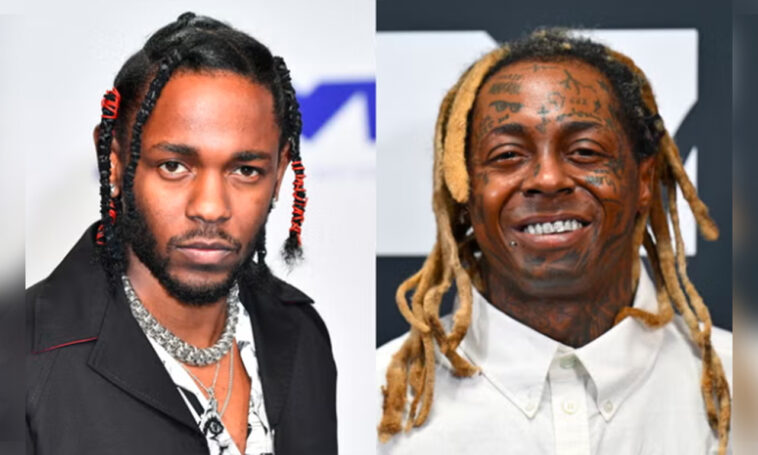Kendrick Lamar has used his surprise album GNX to address several ongoing issues in the rap world, including a long-running feud with Canadian rapper Drake and a controversial moment involving Lil Wayne. The Compton rapper released his sixth studio album without prior warning on November 22, 2024, and it includes a track that directly references his supposed fallout with Lil Wayne over the upcoming Super Bowl Halftime Show. Lamar raps about how his success, including being selected to perform at the 2025 Super Bowl in New Orleans, inadvertently let down Wayne, who had hoped to secure the prestigious spot in his hometown.
Kendrick Lamar’s new album GNX has stirred up a lot of conversation, not just because of its surprise release, but also because it addresses some unresolved issues in the hip-hop community. Released on November 22, 2024, Lamar’s sixth studio album touches on several themes, including his longstanding feud with Drake and, more notably, his complicated relationship with rapper Lil Wayne.
One of the most intriguing aspects of the album is Lamar’s commentary on his upcoming performance at the 2025 Super Bowl Halftime Show in New Orleans. While most fans were initially excited by the announcement, there’s an undercurrent of tension surrounding it, particularly in light of Lil Wayne’s public disappointment. Lamar’s opening track, “wacced out murals,” contains a poignant line that seems to reference the ongoing drama between the two rappers.
In the words of Wayne himself, “It hurt. It hurt a lot.”
Lamar raps, “Used to bump Tha Carter III, I held my Rollie chain proud / Irony, I think my hard work let Lil Wayne down.” These lyrics suggest that Lamar feels responsible for Wayne’s frustration after he was passed over for the Super Bowl spot in favor of Kendrick, a performance that will take place in Wayne’s hometown of New Orleans. The line continues with, “Won the Super Bowl and Nas the only one congratulate me,” further highlighting Lamar’s sense of isolation in the aftermath of the announcement.
The line is a clear reference to the emotional toll the Super Bowl snub took on Lil Wayne, who had expressed his disappointment publicly. In a September video posted on Instagram, Wayne opened up about how deeply the snub hurt him. “It hurt a lot,” Wayne said, adding that he had mentally prepared himself for the opportunity, especially given that the Super Bowl would take place in his hometown. “I thought that was nothing better than that spot and that stage and that platform in my city, so it hurt. It hurt a whole lot.”
Wayne’s video was emotional, and he blamed himself for not being mentally prepared for the disappointment. “I feel like I let all y’all down by not getting that opportunity,” he said, clearly grappling with the blow to his pride and career. He thanked his fans for their support, which he said helped him cope with the pain of not securing the coveted halftime spot. However, it was evident that the setback left a lasting emotional scar on the veteran rapper.
For Lamar, this situation is complicated. While his success in being selected to perform at the Super Bowl is a major milestone in his career, it also means that someone he once looked up to in the rap game — someone who helped shape the genre — feels let down. Lamar’s mention of Tha Carter III, one of Lil Wayne’s most celebrated albums, signals the deep respect he still has for Wayne’s legacy, even as he addresses the tension between them.
The track “wacced out murals” continues with lines that reflect Lamar’s feelings about the current state of the rap game. He raps, “All these n***** agitated / I’m just glad it’s on their faces / Quite frankly, plenty artist but they outdated / Old-a** flows trying to convince me that you they favorite.” This seems to express Lamar’s frustration with the competition in the industry and his awareness of the way some of his peers, including Wayne, may feel about his success.
Despite the tension, Lamar’s album doesn’t seem to be a direct diss toward Wayne, nor does it fully explore the nature of their fallout. Instead, it appears to acknowledge the complexities of their relationship, showing respect for Wayne’s influence while also grappling with the fallout of Lamar’s own success.
Lamar’s decision to address this issue on GNX speaks to his evolving role in the rap world. As he continues to rise to new heights, he finds himself in the middle of more public controversies, both with peers like Drake and Lil Wayne. The release of GNX is not just a musical statement but a response to the pressures of fame, competition, and legacy in the ever-evolving world of hip-hop.
The mention of Wayne on GNX offers a glimpse into the personal and professional struggles Lamar faces as one of the top figures in the genre today. While the album touches on these tensions, Lamar’s lyrics don’t provide clear resolutions, leaving fans to interpret the underlying emotions behind his words. Whether or not this track signals a rift with Lil Wayne, one thing is clear: Kendrick Lamar’s path to Super Bowl glory has come with its own set of challenges.






Join the Community and Be a Part of the Conversation
You must be logged in or registered to post a comment.